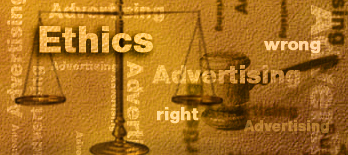What’s the big deal about libel and school yearbooks anyway? In the history of the United States, there is no reported court decision anywhere that a high school has been held libel for content printed in its student media, according to the Student Press Law Center in Arlington, Va.
“It’s rare that student media are sued, period,” staff attorney Mike Hiestand of the SPLC said. “School officials say fear of libel is one reason why they engage in censorship, but that fear is fairly empty. The threat is not nearly as big as officials believe it is.”
That’s not to say libel suits have never resulted in out-of-court settlements, Hiestand acknowledged. Libel settlements may be rare, but they have occurred. That’s another reason why student journalists must remain diligent in their work.
For example, a student at Moon Valley (Ariz.) High School received a $4,500 settlement after he was identified as a “quitter” in a yearbook photo of the wrestling team, according to the SPLC Report (Spring 1987).
“If I were to offer cautionary advice, it would be to act as a reasonable reporter and go to any length to make sure your information is accurate and your goal is to practice sound journalism,” Hiestand said.
Sound journalism includes practicing noble ethics, checking for accuracy and knowing libel law.
Another libel case was still in litigation in 2005.
At a high school in Linden, Calif., someone faintly printed the word “gay” on the soccer photo of a freshman boy in the 2004 yearbook. The boy’s mother filed a lawsuit claiming negligence and libel against the Linden Unified School District and a former teacher. According to the lawsuit, the student suffered a loss of reputation, shame and hurt feelings and was made vulnerable to hate, contempt and ridicule.
Editors should have caught the malicious, clandestine attempt to smear the soccer player. Because the editors were not diligent enough, litigation emerged with both plaintiff and defendants put at risk.
A libel suit can cause personal distress, consumption of time and financial jeopardy for many in a school community. It can erode a publication’s reputation for integrity and credibility even when the publication may not be at fault. Since the burden of proof rests with the plaintiff, it is particularly difficult for the party claiming injury to win a libel case. That means pursuing a libel suit can make a difficult time even more difficult for the person(s) claiming aggrievement.
Libel is a big deal, and every member of the yearbook staff should be tutored in libel law. For a start, here are a few facts that every journalist should know about libel. This information is offered to inspire further study. Libel law is complex, and there is a lot more to learn.
- Libel: Any published communication-words, photos, pictures, symbols-that falsely harms a person’s reputation. Truth is the best defense in a libel case. If a statement is true, no legal basis for a successful libel claim exists.
The plaintiff has the responsibility to prove all four of the following elements to win a libel suit:
Publication – The plaintiff must prove the defamatory statement was communicated to someone other than the person it was about. The statement does not even have to appear in the yearbook. If students read the statement on a computer screen in the yearbook office, that could constitute publication.
Identification – The plaintiff must show that a sufficient number of people who read the defamatory statement identified the plaintiff as being the person the statement was about. Even if no name is used or if the subject’s identity is in other ways disguised, identification can still occur if enough people are able to recognize the plaintiff. For example, writing that the “cheater” was a pregnant member of the cheerleading squad may identify a person as surely as if she was named. Also, care must be given to avoid imputing a third party who fits the disguised description of the subject but who is not involved in the story. And remember, only individuals can sue for libel. If you publish that your school’s basketball team got drunk after a dance, every player could individually sue for libel. But in large groups, usually more than 25, it is rare that an individual can sue unless he can prove the allegedly libelous statement referred to him specifically.
Harm (also called Defamation) – The plaintiff must prove the statement harmed his or her reputation in the eyes of the community. A statement that disgraces or ridicules a person’s reputation or negatively affects the person’s livelihood may be sufficiently harmful to meet this test. In cases of editorial cartoons, parody and satire, if an ordinary person reasonably would interpret the material was not meant to be taken seriously, then it would be difficult for a plaintiff to prevail.
Fault – The plaintiff must prove negligence or malice:
- Negligence – A failure to exercise ordinary care is negligence. A private person who shows that a member of the yearbook staff made a mistake-even an innocent one-that “reasonable” staff members should not have made can show fault. That’s why sound reporting and responsible editing are so important.
- Malice – A public person or public official who can show that the defendant knew his information was false and/or had reckless disregard for the truth can show fault. Determining whether a plaintiff qualifies as a private person, public figure or public official is not always easy, especially when dealing with teachers, coaches, school administrators and others in a school community. But it makes a profound difference, because the classification determines whether the defendant will be held to the lowest fault standard (private person) or the highest (public official). It can make the difference between winning and losing a libel suit.
Finally, yearbooks-because they are published only once a year-are more vulnerable than most other media in covering on-going criminal cases. “Facts” may change along the course of legal actions, and a yearbook cannot update stories the way newspapers can.
Yearbook staffs should learn to identify the red flags of libel, and they should take precautions to avoid poor judgment that can lead to litigation.
More on the topic of libel in the next “Rights in Balance.”




